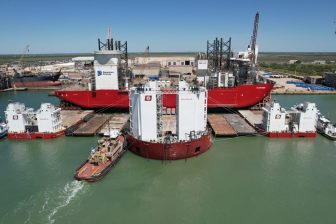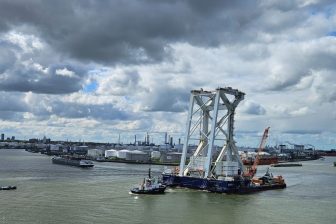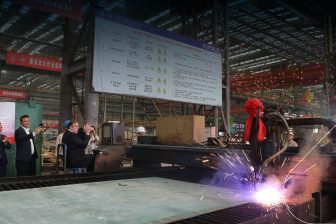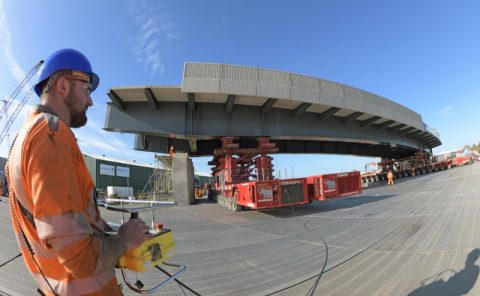
First major Gull Wing Bridge section in position
Gull Wing Bridge is a road bridge under construction over Lake Lothing in the town of Lowestoft, Suffolk, England. The first major steel section of the bridge has been installed over the East Suffolk rail line.
It was moved into position by HBPW Consulting, during a 52-hour possession which began at midnight on Friday evening and concluded on Monday at 5 AM. At that time, the line was returned to Network Rail. The bridge, also known as the Lake Lothing Third Crossing, is a £145m structure, claimed to be the largest rolling bascule bridge in the world lifted using hydraulic cylinders. It is also set to become one of Suffolk’s most iconic landmarks upon its scheduled opening next year.
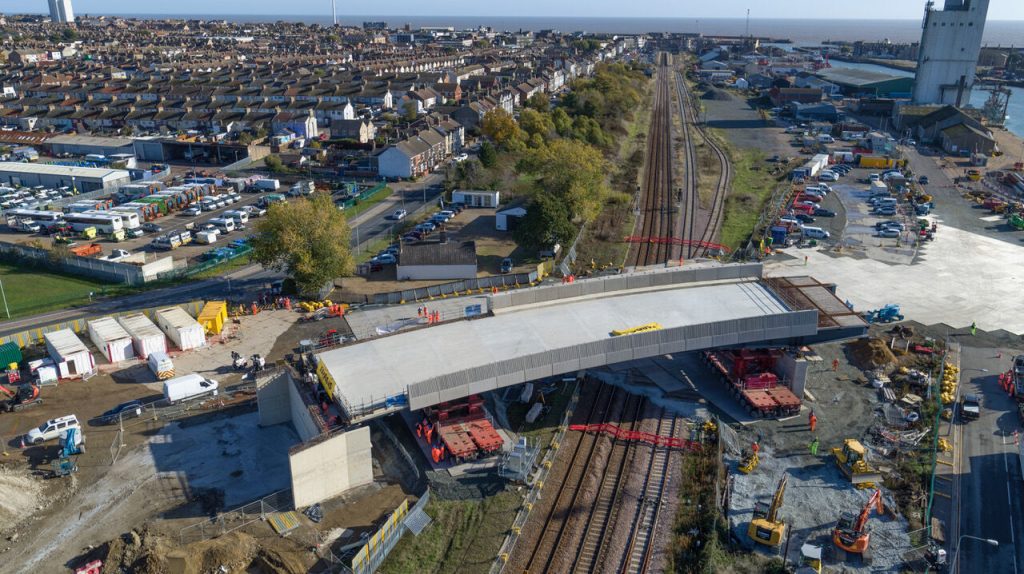
The operation
HBPW Partner, Paul Monaghan said: “The operation required the use of Self-Propelled Modular Transporter units (SPMT), a vehicle composed of a platform supported by computer-controlled axles, in order to move the 20m x 60m North Approach Viaduct section – (NAV1) – into place. It weighed just short of 1500 tonnes.” The SPMTs were provided by Mammoet.
First, the 380 tonnes NAV1’ arrived at the construction site on a barge, after a 32-hour crossing from Victor Buyck Steel Construction in Ghent, Belgium. It required the temporary assessment of existing quay walls, and the temporary works support, to allow the casting of the bridge deck which increased the weight to 1450 tonnes. Challenging soil conditions also required the installation of a concrete raft foundation to limit temporary deflections associated with casting the bridge deck.
HBPWs temporary works designs included an aluminium trackway, supported by ballast and timber matting, enabling the SPMT to move the bridge section into place. “The solution was developed by mitigating risk and the threat of localised settlement under the SPMTs wheels,” added Monaghan. “It was a combined effort by a raft of supply chain partners and, although highly complex, the project was delivered on time and to plan, testimonial to the intricate two-year planning period by a range of people including HBPW’s temporary works team,” he explained.
You just read one of our premium articles free of charge
Register now to keep reading premium articles.


